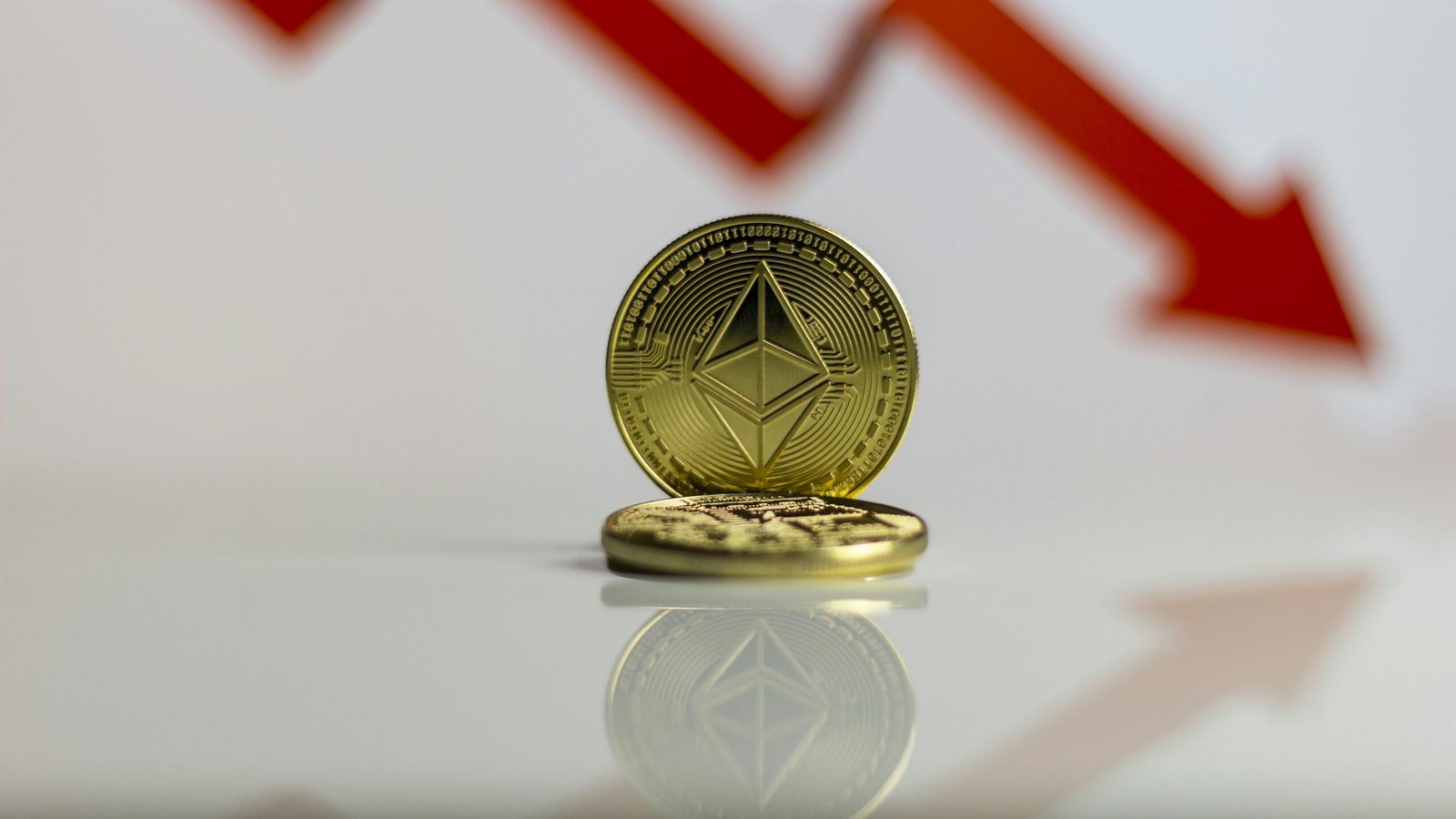The Psychological Rollercoaster of Ethereum: History, Indecision, and Price Drivers
A Brief History of Ethereum
Ethereum, a revolutionary blockchain platform, was initiated by Vitalik Buterin in 2015. Buterin's vision was to create a decentralized platform that would extend the capabilities of blockchain technology beyond simple financial transactions, thereby enabling the execution of smart contracts and decentralized applications (dApps). This innovative approach allowed developers to build complex applications that could operate autonomously without the need for central intermediaries.
The launch of the Ethereum network marked a significant milestone in the evolution of blockchain technology. Unlike Bitcoin, which primarily serves as a digital currency, Ethereum introduced a Turing-complete programming language called Solidity. This empowered developers to create dApps that could manage data and execute agreements in an automated manner, considerably expanding the utility of blockchain technology.
One of the key events in Ethereum’s history was the DAO hack in 2016. The Decentralized Autonomous Organization (DAO) was a venture capital fund built on the Ethereum platform, which raised over $150 million in Ether. However, vulnerabilities in its code were exploited, resulting in the loss of $60 million worth of Ether. This incident led to a significant community debate over how to rectify the situation, culminating in a hard fork that effectively reversed the hack and resulted in the creation of Ethereum Classic.
As the platform matured, it has undergone various upgrades aimed at improving its functionality and efficiency. One of the most notable developments is the transition to Ethereum 2.0, which seeks to enhance scalability, security, and sustainability. This upgrade incorporates a shift from a proof-of-work consensus mechanism to proof-of-stake, facilitating a more energy-efficient and scalable network. Overall, Ethereum's journey has been characterized by innovation, challenges, and resilience, reshaping the landscape of decentralized technologies.
Current Market Indecision and Its Psychological Impact
The Ethereum market currently experiences a pronounced state of indecision, characterized by significant fluctuations in price movements. This volatility can be attributed to several key factors, including regulatory developments, shifting market sentiment, and overall economic conditions. Investors' uncertainty has led to heightened emotional responses, driving extremes of both enthusiasm and apprehension that echo throughout the cryptocurrency landscape.
Recent market trends indicate increased price volatility, with Ethereum often responding sharply to news related to regulations and technological advancements. For instance, announcements from prominent regulators can lead to sudden price drops or surges, igniting emotions such as fear and greed among investors. The phenomenon of fear of missing out (FOMO) becomes particularly relevant during these times; as prices rise, many investors rush to purchase Ethereum in hopes of capitalizing on the upward momentum. Conversely, this can also trigger panic selling when prices fall, leading to further market destabilization.
Psychological factors play a crucial role in shaping investor behavior within the Ethereum market. Herd behavior is prevalent, where investors follow the crowd rather than making independent analyses of market conditions. This collective mentality can exacerbate price swings as large groups of investors make parallel decisions, either buying or selling en masse. Statistical data has shown a strong correlation between these psychological phenomena and Ethereum's price movements. For example, during price spikes, social media platforms often reflect increased discussions about Ethereum, highlighting the collective concerns and aspirations of investors.
In conclusion, the current indecisive state of the Ethereum market is not just a product of external factors but is deeply rooted in the psychological responses of its participants. Understanding these dynamics is essential for navigating the complexities of Ethereum's ever-changing landscape.
The Role of Fundamentals vs. Psychology in Price Determination
The dynamics of Ethereum's price movement are profoundly influenced by a combination of fundamental factors and psychological elements. At the core of this relationship lies the tension between tangible developments—such as advancements in the underlying technology, increased adoption rates, and regulatory discourse—and the fluctuating sentiments of traders driven by fear, greed, or speculation. Understanding this interplay is essential for anyone looking to comprehend the nuances of the cryptocurrency market.
On the one hand, fundamental factors traditionally encompass various metrics that can signal the inherent value of an asset. In the case of Ethereum, technological innovations, improvements in scalability, and the implementation of the Ethereum 2.0 upgrade are examples of developments that can positively impact investor sentiment and subsequently drive prices higher. Furthermore, the growth of decentralized applications (dApps) and the rising popularity of non-fungible tokens (NFTs) built on the Ethereum blockchain strengthen the case for fundamentals playing a significant role in price movements.
Conversely, psychological factors often assume a more dominant role, characterized by the behavioral economics principles that govern trader actions. This can manifest in speculative bubbles, where irrational exuberance leads to inflated prices, or during bearish phases, where panic selling precipitates sharp declines. Historical instances, such as the price surge in late 2017 attributed to speculative frenzy, exemplify how sentiment can overshadow the underlying fundamentals. Additionally, market phenomena like FOMO (fear of missing out) or FUD (fear, uncertainty, and doubt) can significantly alter trading behavior, creating volatility that may not correspond with fundamental valuations.
Ultimately, while sound fundamental analysis provides a basis for evaluating Ethereum's intrinsic value, the reality of market behavior and trader psychology cannot be overlooked. An awareness of how these psychological dynamics influence price movements can equip investors with a richer context, aiding in more informed decision-making within the turbulent landscape of cryptocurrency investment.
Future Predictions: What Lies Ahead for Ethereum
As we look towards the future of Ethereum, several crucial factors are expected to influence its trajectory in the coming months and years. One of the primary elements to consider is the ongoing upgrades within the Ethereum network, particularly the transition to Ethereum 2.0. This upgrade aims to enhance scalability and reduce energy consumption by shifting from a proof-of-work to a proof-of-stake consensus mechanism. By improving transaction speeds and lowering fees, this development could significantly attract new users and projects, potentially bolstering the value of ETH.
Regulatory changes will also play a pivotal role in shaping Ethereum's future. As governments around the world refine their approaches to cryptocurrency, the policies they implement may either encourage or hinder the growth of the Ethereum ecosystem. Comprehensive regulations that support innovation while ensuring user protection could lead to increased institutional investment, while overly restrictive measures might deter engagement. Thus, the regulatory landscape remains a notable factor in Ethereum's future price movements.
Furthermore, competition from other blockchain platforms cannot be overlooked. Ethereum has been a pioneer in the decentralized application space, but platforms like Binance Smart Chain, Solana, and Cardano are gaining traction with their own unique features and capabilities. The community’s perception of these emerging competitors will undoubtedly influence sentiment, and, in turn, the price of Ethereum. A continuous focus on innovation and adaptability is essential for Ethereum to maintain its leadership position.
Lastly, broader economic conditions worldwide can contribute to Ethereum's performance. Factors such as inflation rates, interest rates, and overall market sentiment will impact investor confidence and willingness to engage with digital assets. History has shown that community sentiment can significantly sway prices, and Ethereum is no exception.
In conclusion, the future of Ethereum remains intricately tied to a multitude of factors. While technological advancements, regulatory environments, competitive dynamics, and economic conditions will undoubtedly play roles in its price trajectory, the psychological aspects inherent to market behavior will also be critical in shaping what lies ahead for this evolving blockchain platform.




